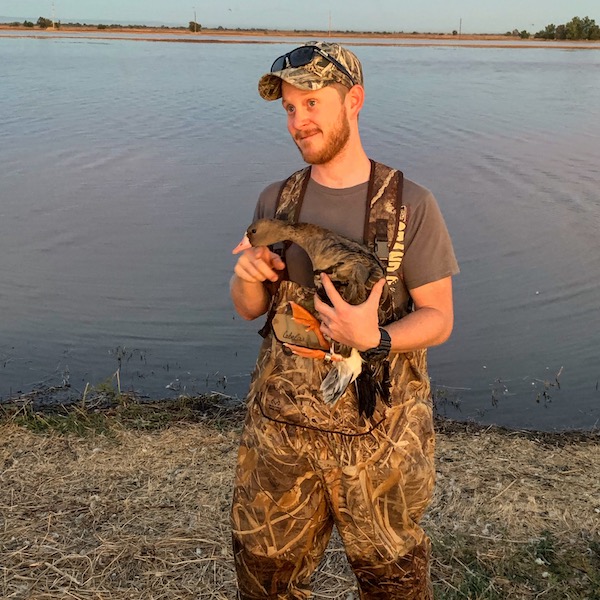Banding Birds and why we do it
By Luke Matthews
In the Sacramento Valley, we are fortunate to share our region with millions of birds. In fact, more than 200 wildlife species depend on rice fields in our area for food and a resting place. Maintaining a healthy bird population is vital to our ecosystem and quality of life.

Wild birds are marked to increase our understanding of their life expectancy, population dynamics, migrations, home ranges, and a number of other factors. These birds can be marked with simple metal leg bands, colored leg bands, wing tags, neck collars, or even highly sophisticated GPS/GSM backpacks or surgical tracking implants. Each of these methods of marking birds can provide critical information that assists with the management of the species. While a wide range of bird species are banded, approximately one third of all banded birds are waterfowl species. Furthermore, due to the fact that waterfowl are hunted, they have one of the highest band reporting of any species.
The first person to start banding birds in North America was John James Audubon in the early 1800s. It was not until 1920 that the Bird Banding Laboratory (BBL) was formed. The BBL is run through the U.S. Geological Survey and it provides a structured system for marking and tagging wild bird species across North America. Before these large scale banding efforts began, we had little understanding of how long species lived or where they migrated. Ultimately, data from marked or banded birds has played a large roll in defining the boundaries of the Pacific, Central, Mississippi, and Atlantic Flyways. In addition to furthering the understanding of life expectancy and migrations, band recoveries have help managers set limits for hunted species and track the recovery of endangered species.

If you ever have the opportunity to see, find, or harvest a marked bird you have the opportunity to become a part of one the largest citizen science projects in the world. There is a simple way to report the band numbers on the BBL website at reportbands.gov. When you report this information, the BBL will send you a certificate with all of the information regarding that bird. This certificate will include the age, sex, location it was originally marked, and other locations that bird has been reported.
Luke Matthews is the Wildlife Programs Manager for the California Rice Commission






